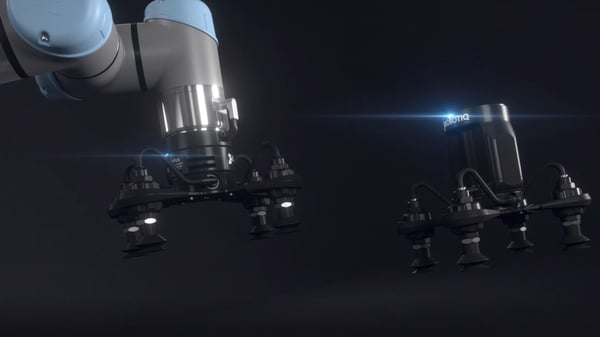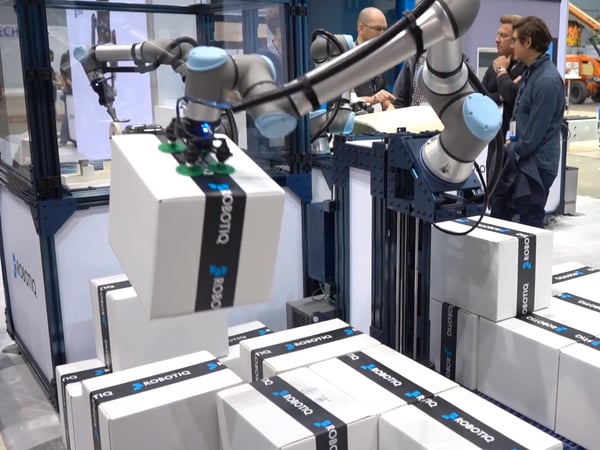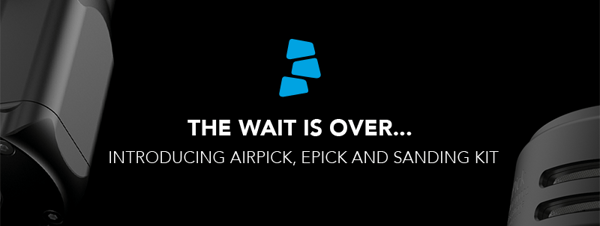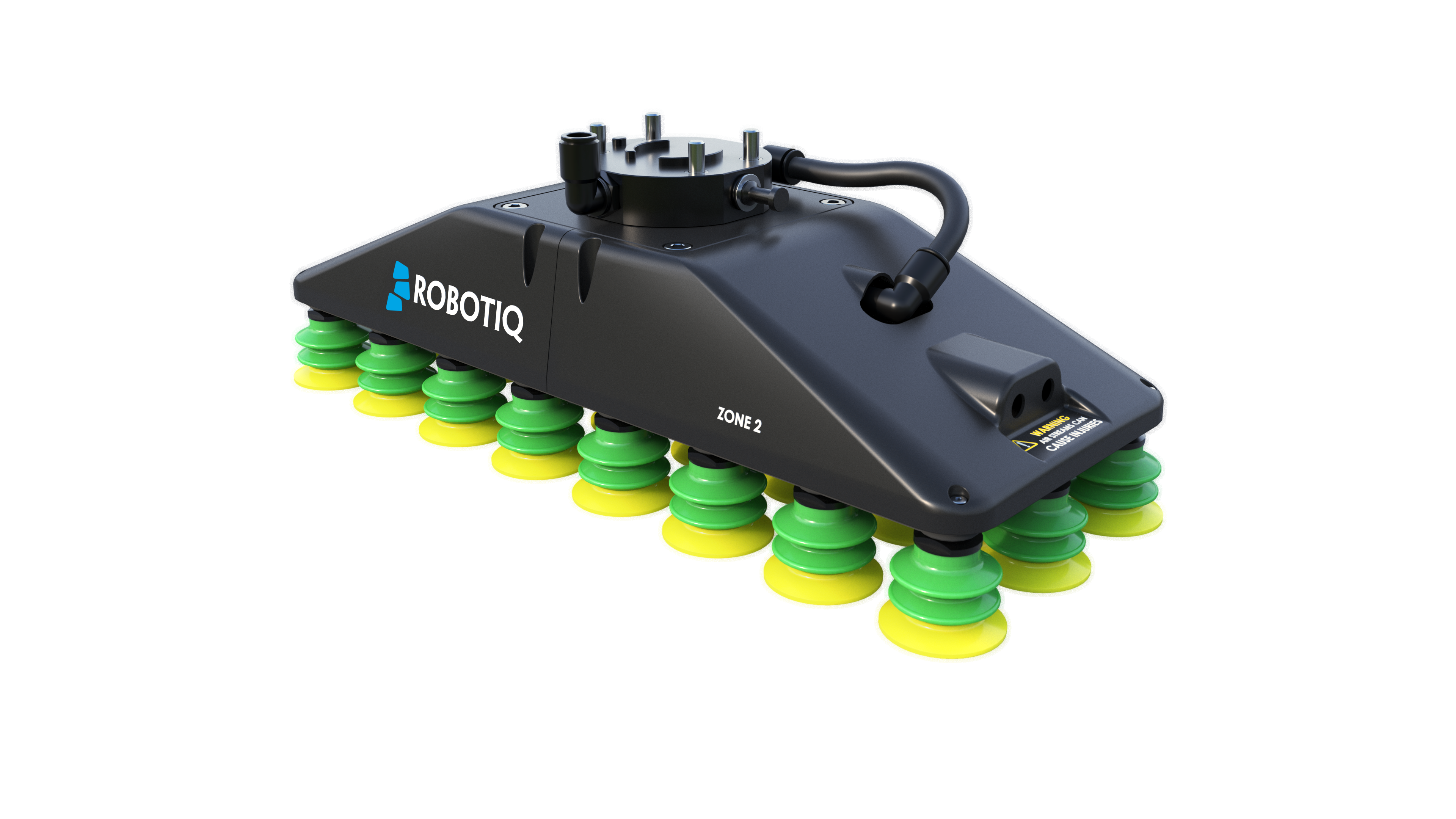5 Doubts You Should Clarify About Vacuum Grippers

Posted on Apr 11, 2019 in Robot Grippers
5 min read time
Are you unsure if a vacuum gripper will really suit your needs? Here are some common doubts that we should clarify to help you make the best decision.
 Meet the New Members of the Gripper Family: to AirPick and EPick!
Meet the New Members of the Gripper Family: to AirPick and EPick!
Vacuum grippers are a very popular end effector for robotic applications. But, they are not suited to every application. As a result, it can be hard to decide which gripper to go with.
You may have some doubts about whether a vacuum gripper is really the right choice for you. Some of these doubts will be very reasonable, others might be unfounded.
Here are 5 common doubts which we think it's important to get straight before you jump to any conclusions.
1. My object is too heavy
You might doubt whether vacuum grippers can lift the heavier objects in your applications. You've seen videos of vacuum grippers lifting small, delicate cakes and electronics, but the objects you need to move are over 5kg each... Can vacuum grippers really support that payload?
This is an understandable doubt — it's easy to misjudge the impressive force provided by a vacuum. We intuitively understand how a fingered gripper can squeeze tightly enough to lift a heavy object, but the suction cups on vacuum grippers… don't they look too flimsy to handle big loads?
Despite their flimsy appearance, suction cups have an impressive lifting force. Bear in mind that, theoretically, you'd only need one 2 cm suction cup to lift over 10kg using atmospheric pressure alone — i.e. without even using a vacuum generator. As a result, even with a basic vacuum generator, the lifting force of one small vacuum gripper is more than enough. And, if you want to add more stability, you can easily add more suction cups and/or add an external pneumatic supply.
 The vacuum grippers are designed for industrial needs and have a payload up to cobot capacity.
The vacuum grippers are designed for industrial needs and have a payload up to cobot capacity.
2. I will need an external air supply
You might be concerned that a vacuum gripper will require you to invest in a bulky and expensive pneumatic supply. You've seen that most vacuum grippers use pneumatics but you don't want to go through the bother of adding an external supply, especially if the robot will be the only machine that's using it.
Sure, it's true that many vacuum grippers use external pneumatics. But, certainly not all of them. The Robotiq EPick, for example, has an in-built vacuum generator. Using the same electric supply as the robot, it can generate a strong enough vacuum for many common applications.
What you should look for in a vacuum gripper is flexibility. You don't want to be tied into a system which will restrict you to always using an external supply. Similarly, you don't want a system which incompatible with them. You want the option of using an external supply, if you need it. There are definitely benefits to using external pneumatics, such as increased flow rate of air, more responsive picking, and a more stable grip.
3. It won't handle my material
You might doubt that a vacuum gripper can deal with all the materials you are using. For example, perhaps you need the robot to handle porous objects (e.g. wood, food, concrete) which would cause the vacuum to escape. Perhaps you are using very thin glass materials which you fear might bend and crack when picked up by a single suction cup.
It's true that vacuum grippers can struggle with some types of material. In particular highly porous materials can jeopardize the integrity of the suction, which could cause the gripper to drop the object.
But, there are ways to overcome these challenges.
Porous materials can be handled by adding an external pneumatics supply. This increases the flow rate of the air, which makes up for the loss of vacuum. The AirPick, for example — our vacuum solution with external air — increases the flow rate by almost 7 times compared to the EPick. This allows the vacuum gripper to handle even porous materials without dropping the objects.
Large, thin materials — like a fragile sheet of glass — can be handled securely by adding more suction cups to the vacuum gripper. This spreads out the load and reduces the bending of the material.

4. It won't be precise enough
You might doubt whether vacuum grippers are really precise enough for your application. If you need your robot to handle tiny objects (e.g. electronic chips, the tiny internals of a pen) you might be wondering if vacuum grippers can handle them.
It is true that vacuum grippers are not always as precise as, say, a precision fingered gripper like the Hand-E. These have sub-mm precision which allows you to handle very small parts accurately, with a part-detection feature so that the robot can tell when it has picked up the object.
Even so, vacuum grippers can definitely handle small components. The trick is finding the right size of suction cup.
With all vacuum grippers, you need to match the diameter of the suction cup to the size of the objects that you want to pick up. Thankfully, suction cups come in all shapes and sizes, right down to diameters of a few millimeters. They also use standard thread sizes — the Air Nodes use a common G 1/4 thread — and many adapters exist to convert between this and other thread sizes. If a small enough suction cup exists, you can probably use it.
5. Vacuum grippers are too complicated
A reasonable doubt you might have is that vacuum grippers are just too complex. You might think that you'll need to make a lot of decisions. You might think that you'll need to purchase many different products from different suppliers just to get the system up and running.
Traditionally, this was, unfortunately, true. A lot of vacuum grippers require you to "do it yourself" and build your own custom gripper from the bottom up.
Thankfully, this is no longer the case. All-in-one solutions like our AirPick and EPick grippers get rid of all the complexity from buying and using a vacuum gripper. Just like our fingered grippers, you can assemble the vacuum gripper and get it up and running very quickly.
If you've still got doubts about whether vacuum grippers are suitable for you, get in contact with us directly. We're happy to answer your questions.
Which of the common doubts from this list did you most relate to? Tell us in the comments below or join the discussion on LinkedIn, Twitter, Facebook or the DoF professional robotics community.


.jpg)





Leave a comment